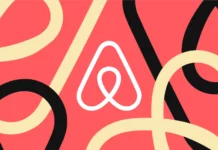YouTube is trying to calm concerns about upcoming changes to its monetization policy following a backlash from online creators. The announcement that YouTube would update the restrictions on “inauthentic” content under the YouTube Partner Program rules was interpreted by some as a message that the platform was planning to demonetize a wider range of videos, including those that use artificially generated content, clips, and reactions. YouTube is now trying to clarify the situation.
“YouTube has always required creators to upload ‘original’ and ‘authentic’ content,” the initial announcement of the policy change reads. “On July 15, 2025, YouTube is updating our rules to better identify mass-produced and repetitive content. This update better reflects what ‘inauthentic’ content looks like today.”
According to a video posted by YouTube editor Rene Ritchie, the changes introduced on July 15 are a “minor update” to the existing monetization policy, which already requires creators to make significant changes to any unoriginal content in their videos. According to Ritchie, the new policy language “will help better define when content is mass-produced or repetitive.” “Such content has not been subject to monetization for years, and it is often considered spam by viewers.”
The updated text of the policy has not yet been published. However, clarifying what type of content is allowed for monetization could help stem the flow of AI-generated video garbage on the platform. The technology is becoming increasingly accessible, making it easier to mass-produce low-quality content. It is common to see videos combining stolen clips with AI-generated voiceovers and entire channels dedicated to pushing out lazily produced AI spam, despite YouTube’s requirement that monetized content must be “original and authentic.”
In response to user X’s suggestion that this change would not allow for the full monetization of videos created with AI, YouTube explained that the use of AI to enhance content is still allowed as long as it meets all other policy requirements. With any luck, the clarification of what counts as “massive or repetitive” content will at least remove some of the spam that fills YouTube feeds.









